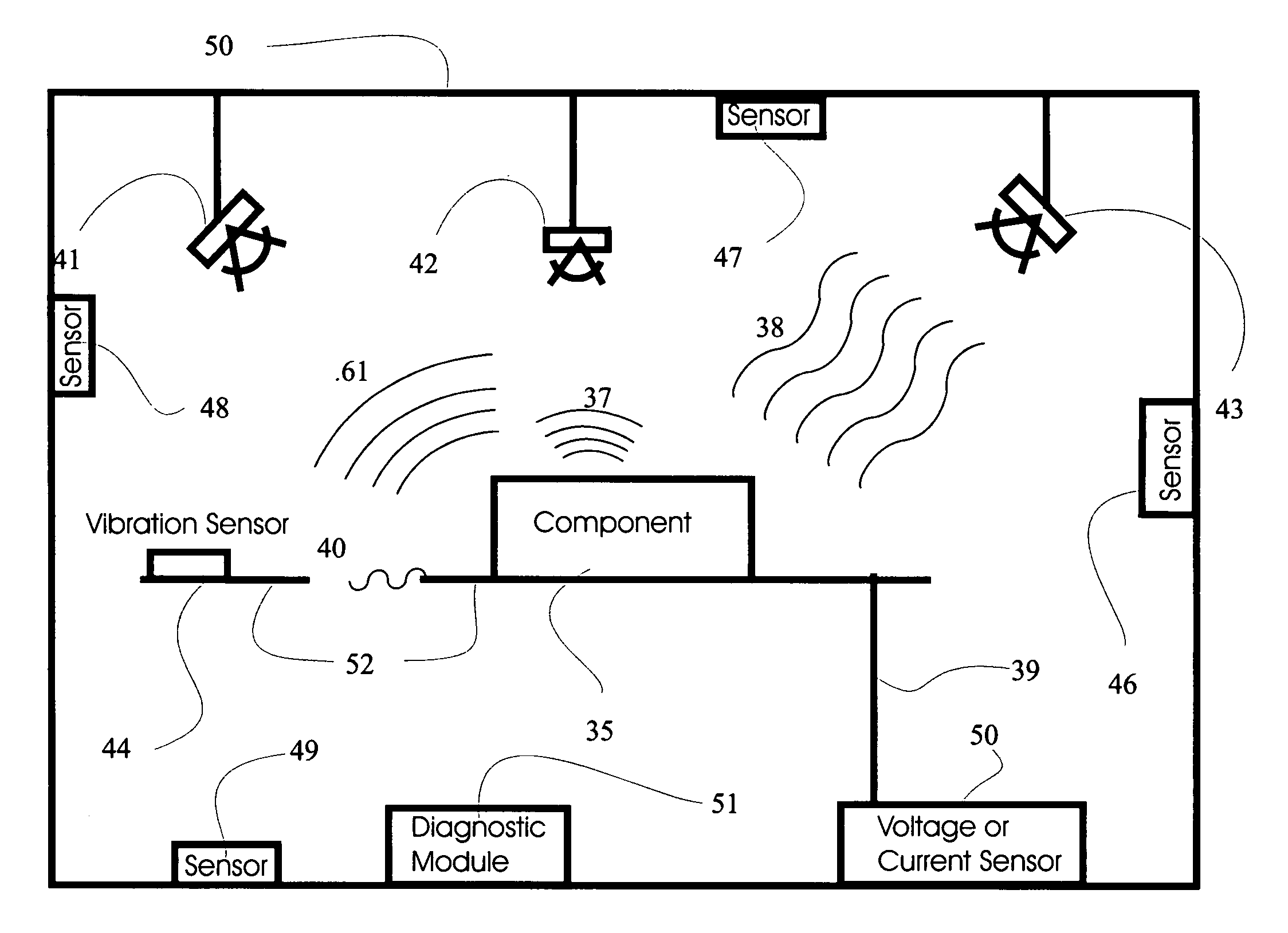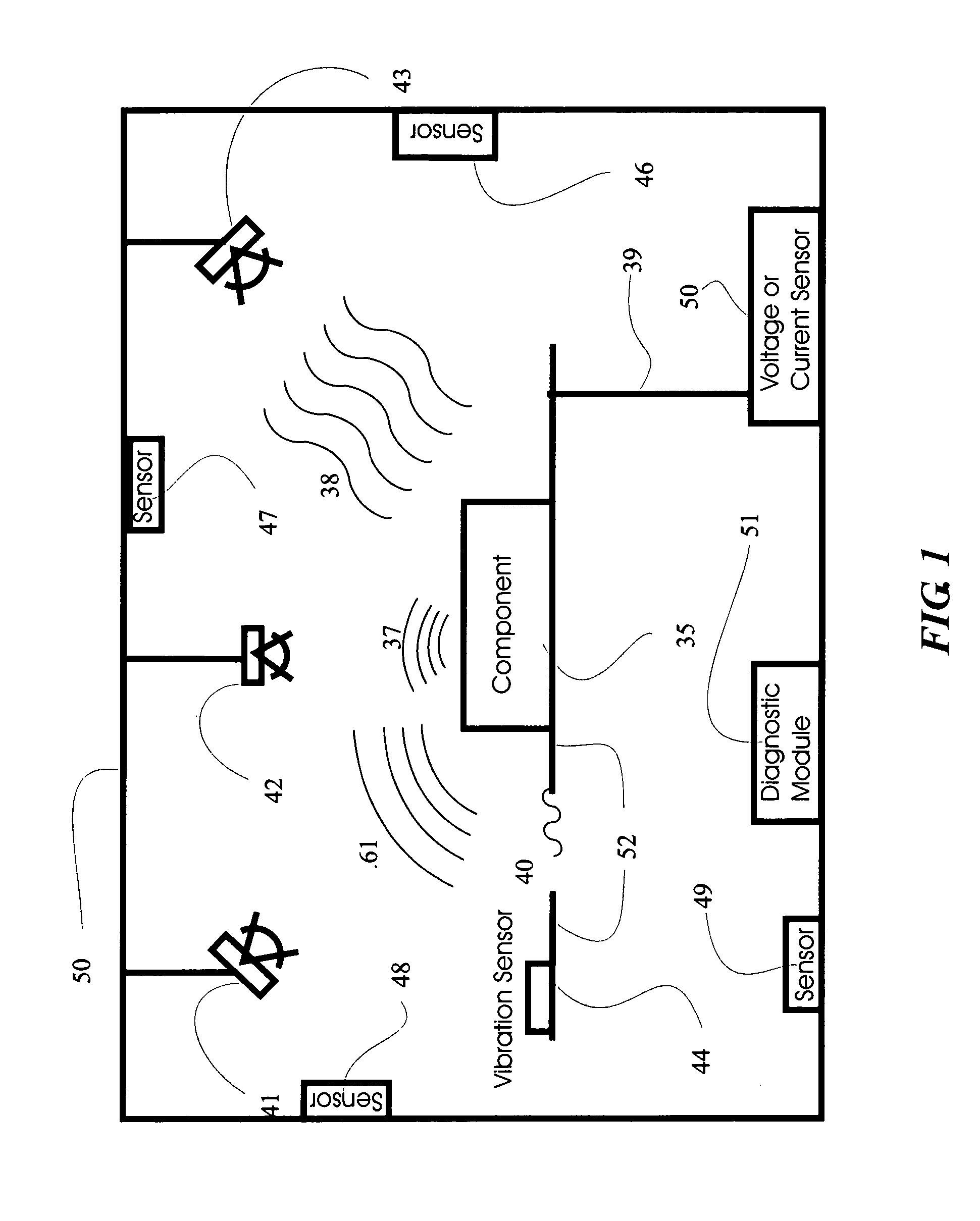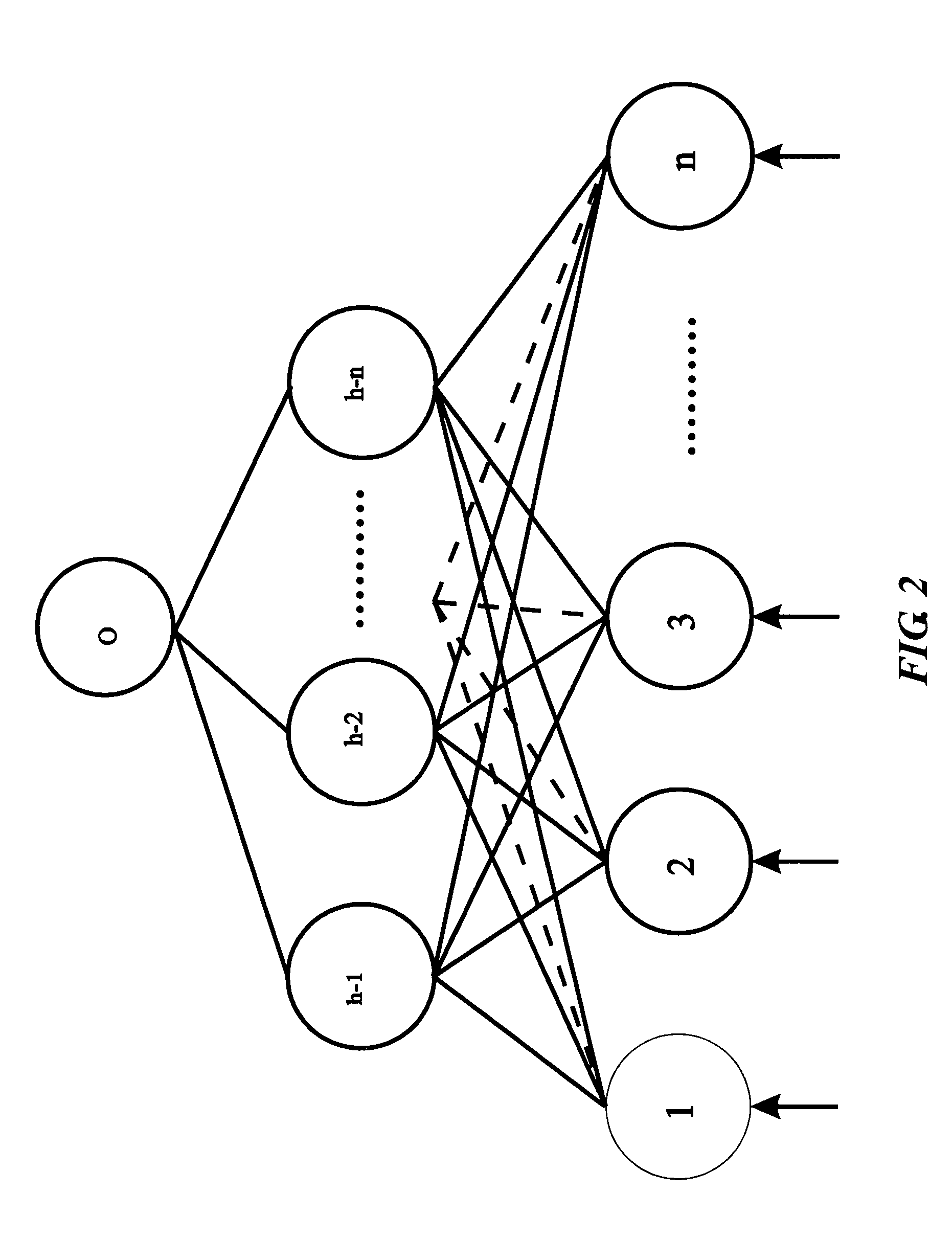Vehicular information and monitoring system and methods
a technology of information and monitoring system, applied in the field of vehicle information and monitoring system and methods, can solve the problems of deterioration of other components of the vehicle, frequent minimal repair cost, and gradual failure of water pump, and achieve the effect of reducing injuries
- Summary
- Abstract
- Description
- Claims
- Application Information
AI Technical Summary
Benefits of technology
Problems solved by technology
Method used
Image
Examples
Embodiment Construction
1.1 General Diagnostics
[0144]A preferred embodiment of the vehicle diagnostic unit described below performs the diagnosis, i.e., processes the input from the various sensors, on the vehicle using for example a processor embodying a pattern recognition technique such as a neural network. The processor thus receives data or signals from the sensors and generates an output indicative or representative of the operating conditions of the vehicle or its component. A signal could thus be generated indicative of an under-inflated tire, or an overheating engine.
[0145]For the discussion below, the following terms are defined as follows:
[0146]The term “component” as used herein generally refers to any part or assembly of parts which is mounted to or a part of a motor vehicle and which is capable of emitting a signal representative of its operating state. The following is a partial list of general automobile and truck components, the list not being exhaustive:
[0147]engine;
[0148]transmission;
[01...
PUM
 Login to View More
Login to View More Abstract
Description
Claims
Application Information
 Login to View More
Login to View More - R&D
- Intellectual Property
- Life Sciences
- Materials
- Tech Scout
- Unparalleled Data Quality
- Higher Quality Content
- 60% Fewer Hallucinations
Browse by: Latest US Patents, China's latest patents, Technical Efficacy Thesaurus, Application Domain, Technology Topic, Popular Technical Reports.
© 2025 PatSnap. All rights reserved.Legal|Privacy policy|Modern Slavery Act Transparency Statement|Sitemap|About US| Contact US: help@patsnap.com



